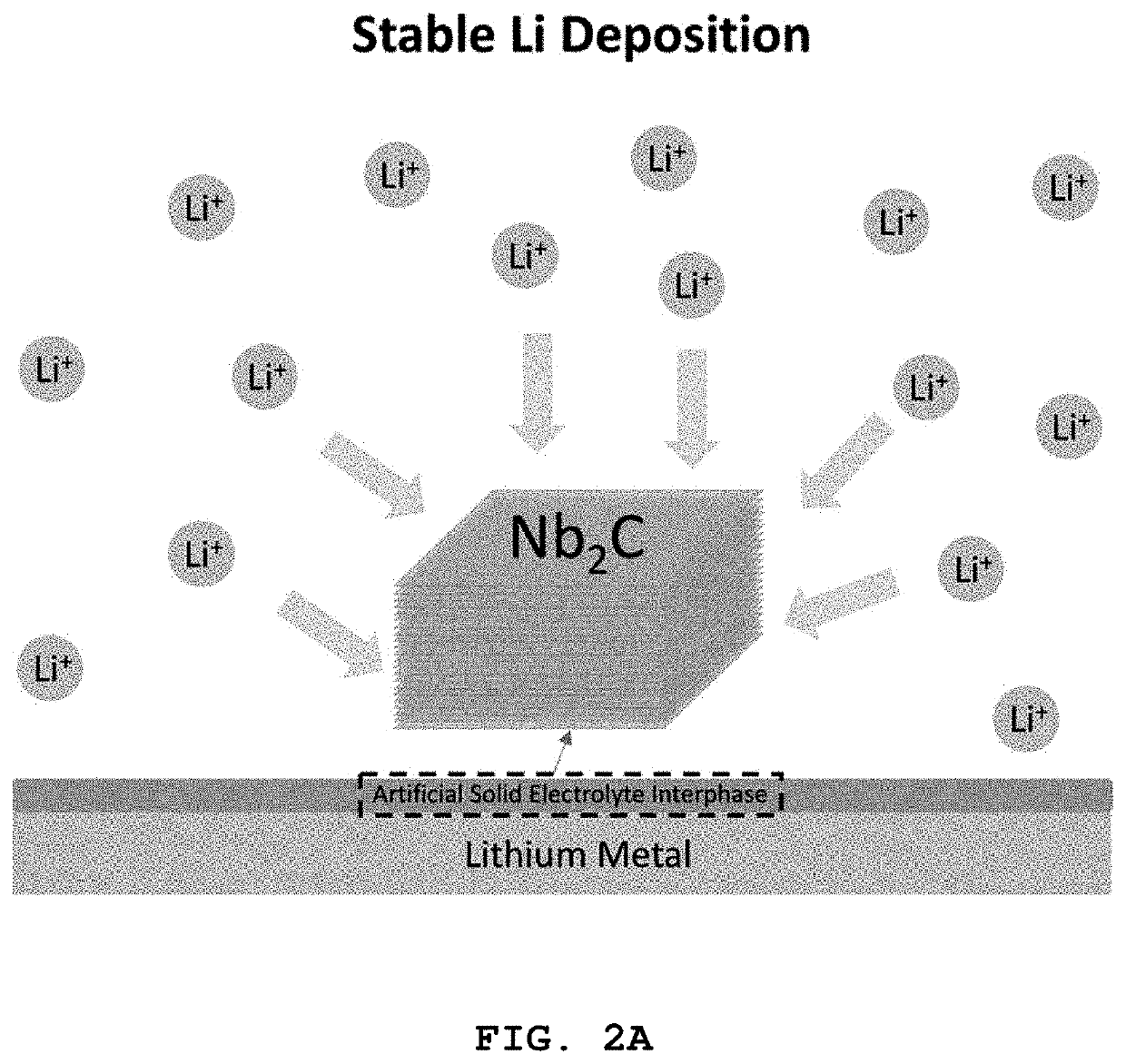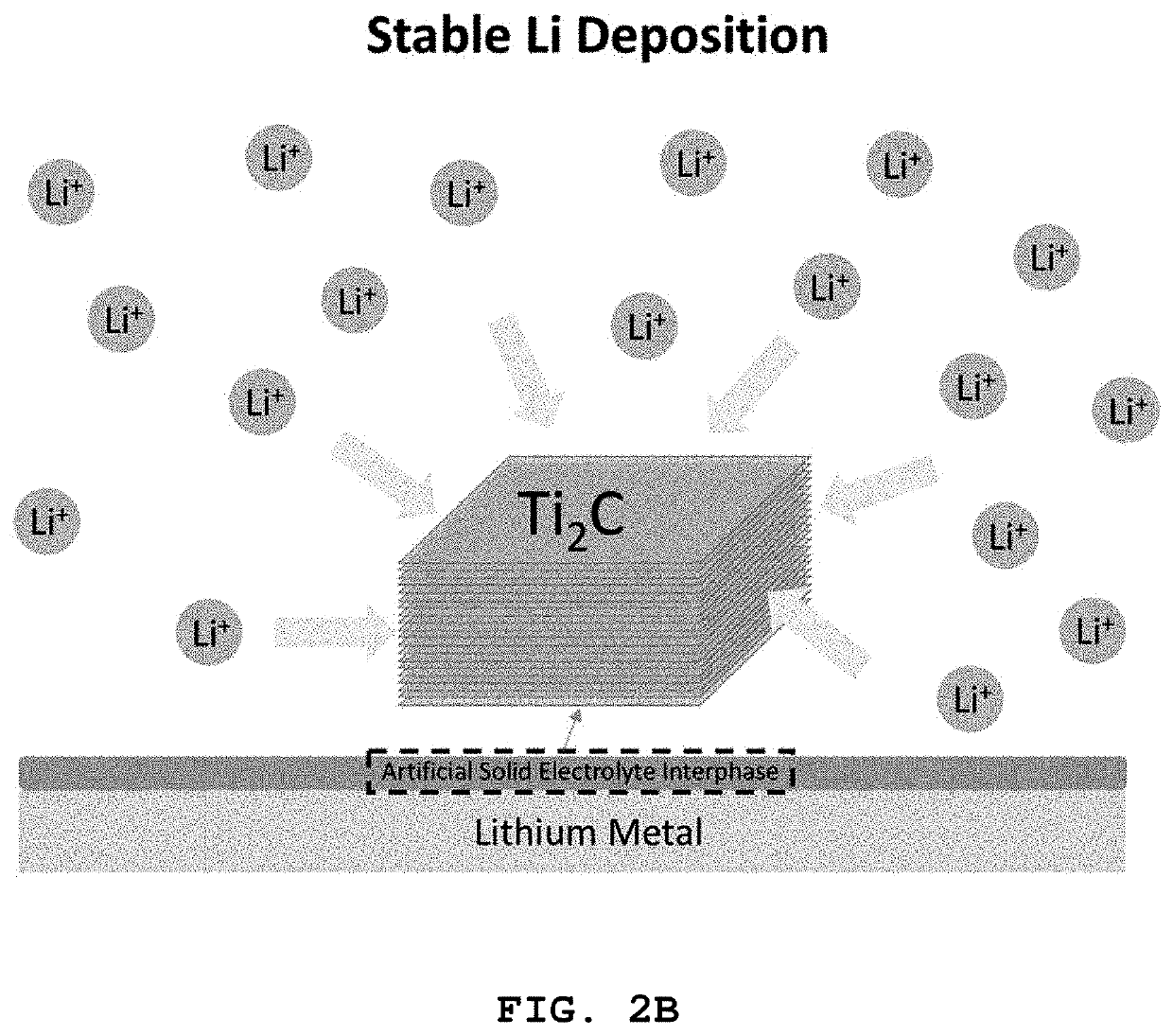Method for producing an anode for a lithium metal secondary battery including a MXene thin film
a lithium metal secondary battery and anode technology, which is applied in the field of lithium metal secondary batteries including anodes, can solve the problems of failure to commercialize lithium metal battery systems, high production costs, and high production costs, and achieves rapid diffusion, stable deposition of lithium ions, and inhibit the formation of dendrites.
- Summary
- Abstract
- Description
- Claims
- Application Information
AI Technical Summary
Benefits of technology
Problems solved by technology
Method used
Image
Examples
preparation example 1-3
Preparation of Ti3C2
[0093]10 g of commercial Ti3AlC2 was mixed with 10 ml of hydrofluoric acid (48% in H2O). The reaction was allowed to proceed at room temperature for 1-7 days. When the Ti3AlC2 was etched for 3-4 days, Ti3C2 was optimally induced. The resulting Ti3C2 was washed 10 times with deionized water by centrifugation and dried in an oven at 80° C. to obtain a powder.
example 1-1
Production of Lithium Metal Electrode on which Nb2C Thin Film was Formed
(1) Formation of Nb2C Thin Film
[0094]The Nb2C particles (5-10 wt %) prepared in Preparative Example 1-1 were mixed with ethanol, followed by ultrasonic dispersion for 5 min. The resulting suspension was subjected to LBS coating to form a thin film of the Nb2C particles on a commercial copper foil as a substrate. Specifically, the suspension was added to water in which the substrate was immersed. When ˜30% of the water surface was covered with a self-assembled film of the Nb2C particles, the substrate was slowly lifted such that the self-assembled film formed on the water surface was coated on the substrate. The suspension was continuously added at a constant rate such that the self-assembled film was maintained constant on the water surface. The coated substrate was dried for ˜1 min on a hot plate maintained at 120° C. to remove water. This procedure was repeated 3-5 times.
(2) Transfer of the Nb2C Thin Film to L...
example 1-2
Production of Lithium Metal Electrode on which Ti2C Thin Film was Formed
[0096]A Ti2C thin film-transferred lithium metal electrode was produced in the same manner as in Example 1-1, except that the Ti2C particles prepared in Preparative Example 1-2 were used instead of the Nb2C particles prepared in Preparative Example 1-1. The electrochemical properties of the Ti2C thin film-transferred lithium metal were measured. The entire procedure was carried out in a dry atmosphere at an RH of 0-1% and an inert gas atmosphere.
PUM
| Property | Measurement | Unit |
|---|---|---|
| thick | aaaaa | aaaaa |
| current density | aaaaa | aaaaa |
| binding energies | aaaaa | aaaaa |
Abstract
Description
Claims
Application Information
 Login to View More
Login to View More - R&D
- Intellectual Property
- Life Sciences
- Materials
- Tech Scout
- Unparalleled Data Quality
- Higher Quality Content
- 60% Fewer Hallucinations
Browse by: Latest US Patents, China's latest patents, Technical Efficacy Thesaurus, Application Domain, Technology Topic, Popular Technical Reports.
© 2025 PatSnap. All rights reserved.Legal|Privacy policy|Modern Slavery Act Transparency Statement|Sitemap|About US| Contact US: help@patsnap.com



